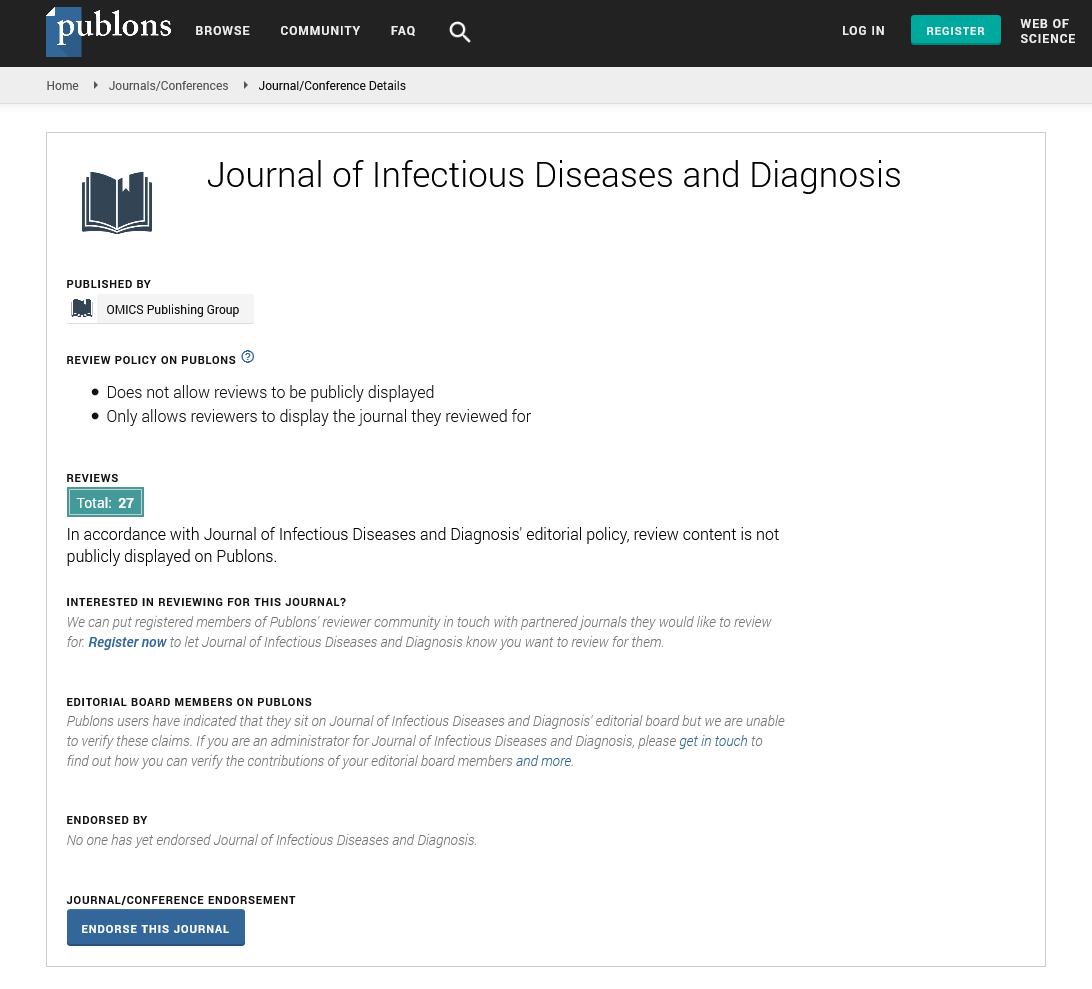Indexed In
- RefSeek
- Hamdard University
- EBSCO A-Z
- Publons
- Euro Pub
- Google Scholar
Useful Links
Share This Page
Journal Flyer

Open Access Journals
- Agri and Aquaculture
- Biochemistry
- Bioinformatics & Systems Biology
- Business & Management
- Chemistry
- Clinical Sciences
- Engineering
- Food & Nutrition
- General Science
- Genetics & Molecular Biology
- Immunology & Microbiology
- Medical Sciences
- Neuroscience & Psychology
- Nursing & Health Care
- Pharmaceutical Sciences
Commentary - (2024) Volume 9, Issue 3
Understanding Hospital Differences in Acute Cholecystitis Treatment Approaches
Akira Kiyan*Received: 01-May-2024, Manuscript No. JIDD-24-25998; Editor assigned: 03-May-2024, Pre QC No. JIDD-24-25998 (PQ); Reviewed: 20-May-2024, QC No. JIDD-24-25998; Revised: 28-May-2024, Manuscript No. JIDD-24-25998 (R); Published: 03-Jun-2024, DOI: 10.35248/2576-389X.24.09.275
Description
The variation in the nonoperative management of acute cholecystitis across different hospitals is a significant issue that underscores the complexities and challenges in healthcare delivery. Acute cholecystitis, an inflammation of the gallbladder typically caused by gallstones, presents a common yet critical condition requiring prompt and effective treatment. While surgical intervention, specifically cholecystectomy, remains the standard treatment, nonoperative management strategies, including antibiotic therapy and percutaneous cholecystectomy, are often employed in specific patient populations, particularly those at high surgical risk.
Interhospital variation in the management of acute cholecystitis can be attributed to several factors, including differing institutional protocols, resource availability, physician preferences, and patient demographics. Understanding these variations is essential for improving patient outcomes, standardizing care, and optimizing resource utilization.
One of the primary reasons for variation is the difference in institutional protocols and guidelines. Some hospitals may have well-established protocols favoring early surgery, while others might adopt a more conservative approach, reserving nonoperative management for patients who are poor surgical candidates. This divergence in practice reflects the lack of a universally accepted guideline for the nonoperative management of acute cholecystitis, leading to inconsistent treatment approaches.
Resource availability also plays a critical role in determining the management strategy. Hospitals with limited access to surgical expertise or facilities might be more inclined to opt for nonoperative management. Conversely, tertiary care centers with advanced surgical capabilities and round-the-clock access to surgical teams might prefer early cholecystectomy even in highrisk patients, depending on their capacity to manage potential complications.
Physician preferences and experiences significantly influence the choice of treatment. Surgeons and gastroenterologists might have varying comfort levels and familiarity with nonoperative techniques like percutaneous cholecystostomy. Those more experienced in these procedures might be more likely to recommend them, especially for high-risk patients. Additionally, some clinicians might prefer a nonoperative approach to avoid the potential complications associated with surgery in elderly or critically ill patients.
Patient demographics and comorbidities also contribute to the variability in management strategies. Older patients with multiple comorbidities are often deemed higher surgical risks, leading clinicians to favor nonoperative management. In contrast, younger, healthier patients are more likely to undergo early surgical intervention. The presence of conditions such as diabetes, cardiovascular disease, or Chronic Obstructive Pulmonary Disease (COPD) can further influence the decision making process, as these comorbidities can increase the risks associated with surgery.
Despite the rationale behind these variations, the lack of standardization can lead to discrepancies in patient outcomes. Studies have shown that early cholecystectomy, when feasible, is associated with shorter hospital stays, reduced overall morbidity, and lower readmission rates compared to delayed or nonoperative management. However, in certain high-risk populations, nonoperative management can be a lifesaving alternative, provided it is followed by elective cholecystectomy once the patient’s condition stabilizes.
Efforts to standardize care should focus on developing comprehensive, evidence-based guidelines that outline clear criteria for selecting patients for nonoperative management versus early surgery. Such guidelines should be based on strong clinical evidence and expert consensus, considering factors such as patient age, comorbidities, severity of cholecystitis, and institutional capabilities. Moreover, these guidelines should be flexible enough to accommodate individual patient circumstances and institutional variations, promoting a specific approach to each patient’s care.
Education and training are also essential in reducing interhospital variation. Clinicians should be well-versed in both operative and nonoperative management techniques, understanding the indications, benefits, and risks of each approach. Multidisciplinary collaboration among surgeons, gastroenterologists, radiologists, and critical care specialists can enhance decision-making and ensure that each patient receives the most appropriate care based on their specific clinical scenario.
Quality improvement initiatives, such as peer review, clinical audits, and feedback mechanisms, can further help standardize care and reduce variation. Hospitals can benchmark their performance against national standards and best practices, identifying areas for improvement and implementing targeted interventions. Additionally, patient outcomes and satisfaction should be continuously monitored to ensure that the chosen management strategies are effective and aligned with the best interests of the patients.
Conclusion
In conclusion, the interhospital variation in the nonoperative management of acute cholecystitis highlights the need for standardized guidelines, education, and quality improvement initiatives. By addressing these variations, healthcare providers can improve patient outcomes, optimize resource utilization, and ensure that all patients receive consistent, high-quality care regardless of where they are treated.
Citation: Kiyan A (2024) Understanding Hospital Differences in Acute Cholecystitis Treatment Approaches. J Infect Dis Diagn. 9:275.
Copyright: © 2024 Kiyan A. This is an open-access article distributed under the terms of the Creative Commons Attribution License, which permits unrestricted use, distribution, and reproduction in any medium, provided the original author and source are credited.

